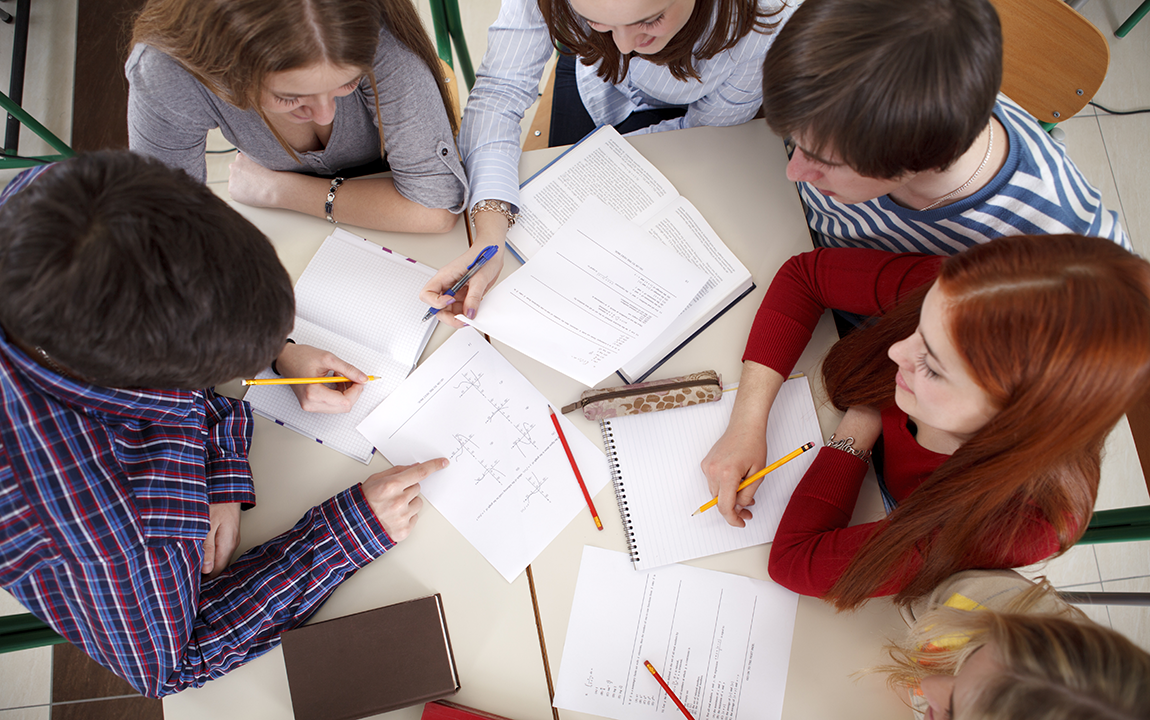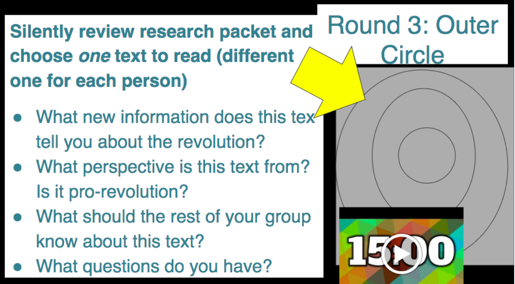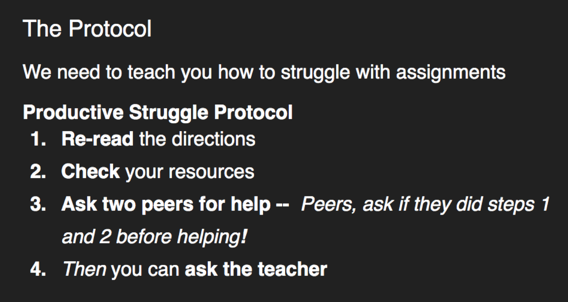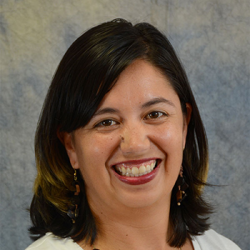
The beginning of the school year can often feel like a weird no-man’s land. It’s important to start the year strong by building up your classroom culture and making students feel part of a safe and welcoming community, but you also want to start the year with engaging and rigorous content. This awkward balance can sometimes make it difficult to figure out how to get started.
Whether you are someone who likes to start Day 1 with your first Entry Event for a project, or someone who prefers to take their time in the first week or so before launching into PBL, here are three routines and protocols that can help you make sure that whenever your first project launches, your students are ready to hit the ground running.
1. Establish a go-to academic conversation protocol.
I’m a firm believer that regular, predictable routines can help students get past learning how to start something and jump right into the rigorous, deep thinking we’re all hoping to see. No matter the grade level, academic conversation skills are important, and often difficult, for students to learn. We can forget that, just like completing multi-step equations or difficult reading assignments, conversation skills also need to be explicitly taught and practiced.
I like to do this by setting up a regular protocol that we use at least once in every project. That way, I can increase the rigor and quality of the conversations with each practice by upping the amount of time students are asked to maintain the conversation, or by adding elements to the conversation such as synthesizing information, or providing counter-arguments.
My favorite conversation protocol is called Building Background Knowledge (BBK). This protocol was introduced to me by Clare Green, my former history colleague and current principal at Impact Academy of Arts and Technology. Many variations of this are available online, such as this one from EL Education.

The general idea is that students begin with their prior knowledge of a topic, then together read a shared text or examine a shared document, and finally end with different “expert” texts or documents. In each round, students are given some time to silently read, think, and record their thoughts on chart paper, and then some time to share out in an academic conversation.
Once I introduce this protocol in September, I can rely on it throughout the year to engage students in building schema for new projects together.
2. Create expectations for collaborative work.
From Day 1, make it clear to students that they are going to be working together and relying on each other to learn in your class. This can help students work productively later on when they have more complex collaborative projects. I like to do this by starting with a teacher-formulated team contract that, throughout the year, I gradually release to student control.
For example, in the first week of school I like to do a scavenger hunt using maps in my room. This is a group assignment that includes a simple contract I create for them. In this contract, students must agree to complete their assigned roles, ask each other for help before they ask me, and each be responsible for their own notes. Students sign the contract and, at the end, I give them a small grade based on my observations of their collaboration
By the end of the year, students participate in the Revolutions Mock Trial project. In this project, students work in legal teams of 4-6 and create their own contract. Each team decides what 3-5 expectations they should uphold to be able to complete the project successfully, as well as what their rewards and consequences should be.
For example, some teams might decide that each team member must come to class prepared with their work. They might choose their reward to be a positive text to their parents from me, and their consequence may be that anyone who isn’t prepared has to do 10 push-ups before they can move on. At the end of the project, rather than me assigning them a grade for their collaboration, students have the agency to review their contract and examine their team work, giving each team member an honest grade for how well they stuck to the agreements.
3. Lovingly establish the expectation of engaging in productive struggle.
From the moment they enter into your classroom, students will be trying to figure out how to succeed. They’ll be examining how “easy” your class will be, how much you’ll help them, and what they should do if they’re confused. I try to make it clear from that first day that students will need to figure things out on their own and with their peers, that I won’t just give them the answer if they’re stuck, but also that it will be safe for them to struggle.
Thinking back to the map scavenger hunt I use during the first week of school, part of the contract students sign says that they can only ask me two questions throughout the entire assignment. At first, students don’t believe me. They get stuck and can’t find an answer, and immediately ask their group’s assigned “liaison” to ask me for help. At that point, I try to make sure they really mean it. I ask them questions like, “Are you sure you want to use one of your two questions for this?” or “Did you really try everything as a group to figure it out already?”. Usually, students will look at the rest of the assignment, realize they’ll likely need much more help later, and decide to push forward without me.
The adverb “lovingly” is important with this expectation, because I want students to know that while I’m not going to give them all the answers, I also will reward their struggle and I will never shame them for getting something wrong.
One way to reward productive struggle is through positive reinforcement. My grade level team established a protocol for reminding students to engage in productive struggle and to reward them when we saw it happening. Students were asked to re-read directions, check their resources, and ask two peers before turning to the teacher for help. As teachers, we reviewed the protocol daily and rewarded students using our school-wide incentive system when we saw them using the steps we suggested.

As you look forward into a new school year, choose a few routines and structures that will set your students up for success and allow them, and you, to engage more deeply in the beautifully messy work of learning together.

